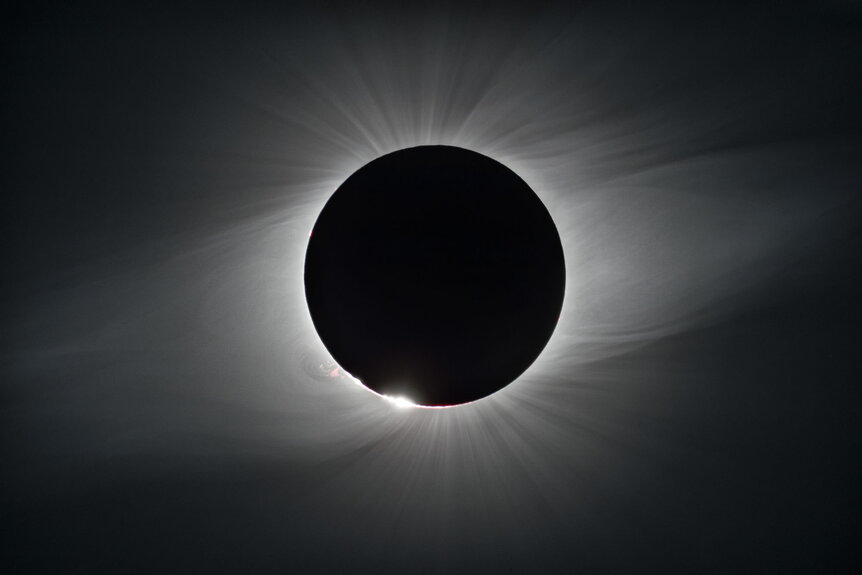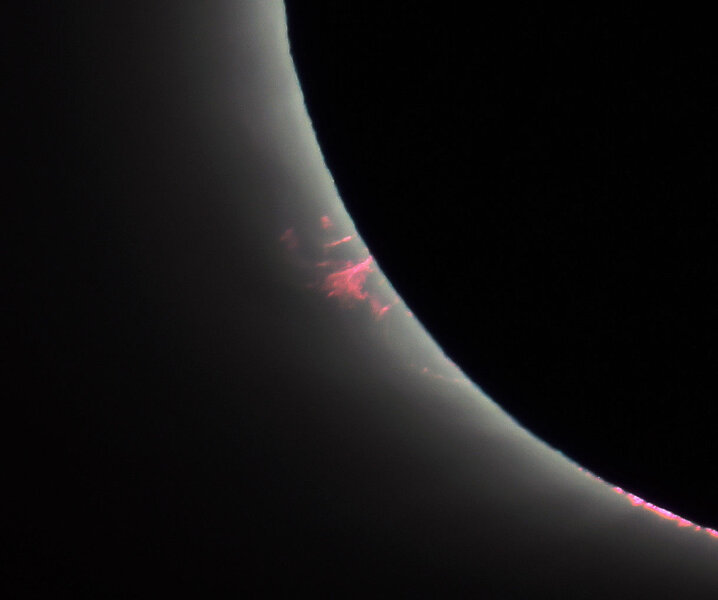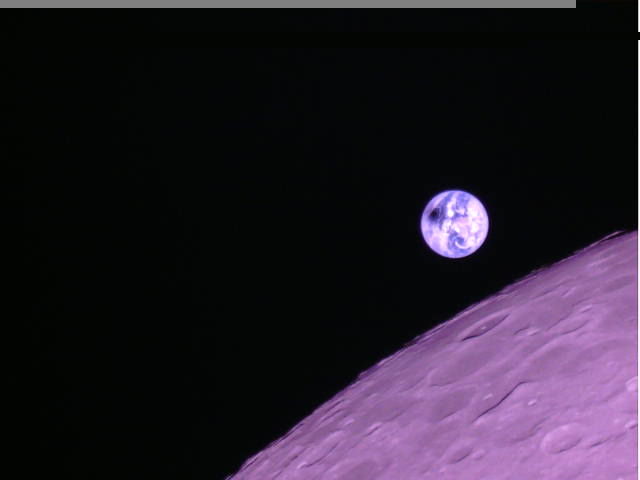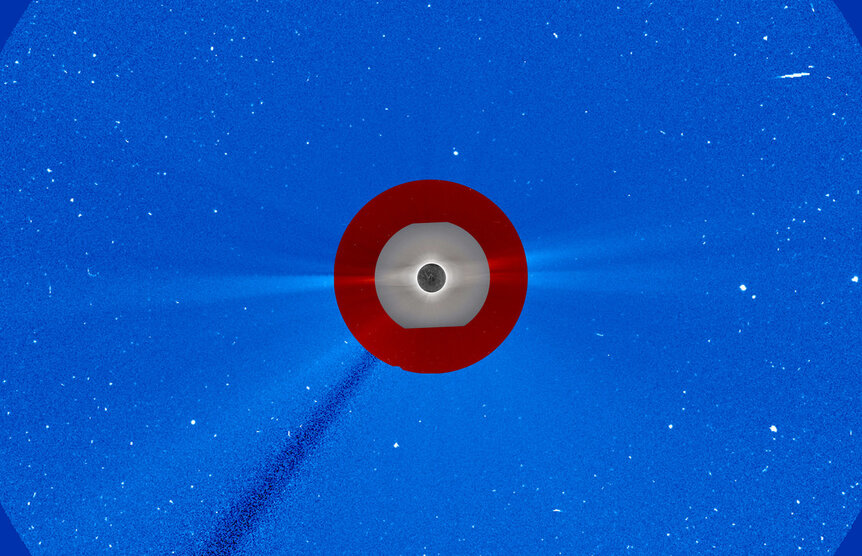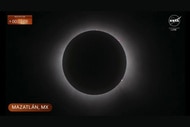Create a free profile to get unlimited access to exclusive videos, sweepstakes, and more!
From Earth and from space, the wonder of a total solar eclipse
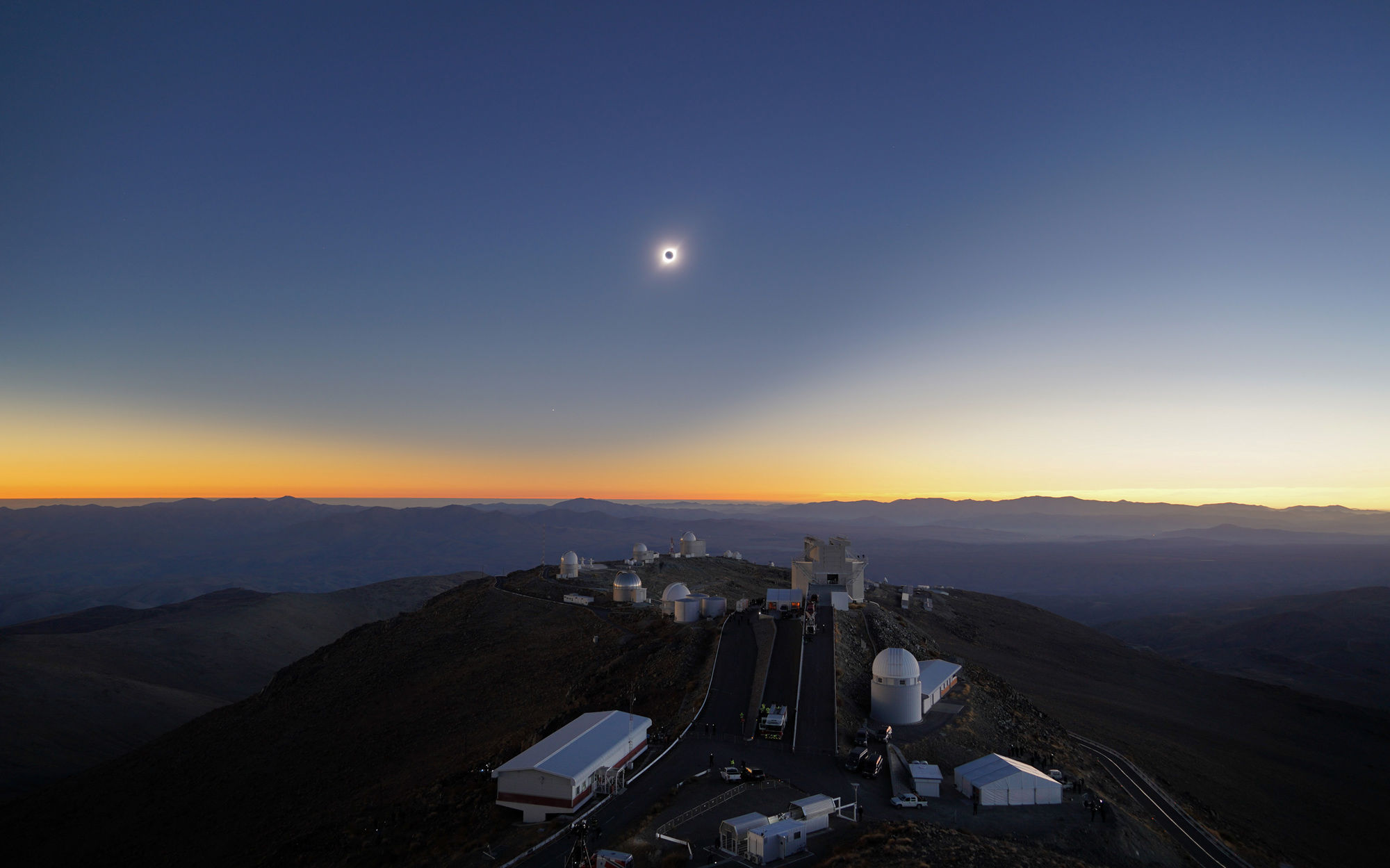
Last week, the dance of gravity and orbital mechanics brought us a rare and wondrous event: a total eclipse of the Sun. When this happens, the Moon passes directly between the Earth and Sun, casting its shadow far, far through space to touch down upon our planet's surface.
The shadow is small, just a few hundred kilometers across in general, so you have to be in the right spot at the right time. But if you are, you can experience what can only be described as the awe and glory of the Sun in full eclipse.
I experienced this myself just two years ago in Wyoming, but on July 2, 2019 the angle of the Moon in space brought its shadow to the Pacific Ocean and South America. People from around the globe flocked to Chile and Argentina to witness this for themselves.
Having now finally seen one, I can tell you that photos and video do not and cannot do it justice — you don't get to feel the darkening sky, the onset of the chill, the weird lighting as more of the Sun is covered by the Moon…
… but that doesn’t mean such recordings are without their own grandeur. I saw quite a few as the week went by after the eclipse, and some of them are jaw-dropping. Here, let me show you just a sample of them.
First up, a gorgeous close-up of the Sun during totality, taken at the La Silla observatory in Chile. The corona, the Sun's extremely hot but ethereally thin atmosphere, can be seen streaming away from the surface, hot plasma following the lines of intense magnetism which bubbles up from deep inside the Sun. At the bottom left are several prominences, huge towering sheets of plasma, glowing red due to the way warm hydrogen emits light. One is so bright it appears overexposed and white.
A photo taken by astronomers at La Silla shows a closeup of one of those prominences erupting from the Sun. Bear in mind that prominence is roughly 100,000 kilometers high! The Earth is about the same size as the one of the 'little' prominences you can see in a series along the bottom right of the Sun, in case you needed to have any sense of arrogance and self-importance ground under the heel of the cosmos.
The Sun is huge.
Moving on… This video is stunning:
That video combines data taken by the GOES 16 and 17 satellites, parked in geosynchronous orbits about 40,000 km above the Earth. From that orbit it appears the Earth doesn’t rotate beneath them (they orbit once every 24 hours), so instead you see the terminator (the line marking day from night) moving to the left.
Then the shadow of the Moon moves from the left to the right, sweeping across first the ocean and then South America. You can see how small the shadow of the Moon is (the Moon itself is about 1/4 the size of Earth, and the shadow smaller yet). There's also hurricane Barbara in the Pacific, and a swirl of rotation in the clouds in northern Canada. All in all, a remarkable sequence!
It also clearly shows why you have to be at the right spot on Earth at the right time or else you’ll miss it. Only people in the path of that dark shadow see a total solar eclipse; everyone else sees a partial one or none at all!
This may win the record for most distant observation of the Moon’s shadow on the ground… as well as the most jaw-droppiest:
That spectacular image was taken by the Longjiang 2, a spacecraft orbiting the Moon which hitched a ride on the Chinese mission Queqiao, which itself was in support of the lunar lander and rover Chang'e 4. Longjiang 2 doesn’t have a hugely fancy camera, so the image is low-res, but it shows something truly amazing: The Moon itself in the foreground and the Earth in the background with the Moon's shadow cast on it. This really gives you a sense of how distant the Moon is. 380,000 km is a long, long way.
Combining observations from ground and space is possible, too. In this one, the Sun's surface in extreme ultraviolet light was imaged using the ESA Proba-2 satellites (shown in dark gray). This was then superposed on an image of the inner corona (lighter gray) where streamers of magnetic energy can be seen. The outer corona (in red) was observed by the NASA/ESA satellite SOHO, and an even wider field (in blue) was imaged by a different camera on SOHO (the black fuzz to the lower left is an artifact of a piece of metal used by SOHO to hold a small metal disk in place to block the light from the Sun itself so the much fainter corona can be seen). You can trace the streamers out for a long way, many millions of kilometers; for scale, the Sun is 1.4 million km wide. Some of the dots in the background are stars, and others are cosmic rays, subatomic particles that hit the detector and leave bright blips.
Ironically, this image was taken during the eclipse, but from the point of view of the Proba satellites the Moon was not totally blocking the Sun! I can prove it; here's what they saw:
Still, the fun composite image can be used as a reference to see what the Sun and its corona were doing during the eclipse itself, especially far from the Sun in the sky.
I love this video, too. It shows you don’t have to have a total eclipse to still see something breathtaking. In this case, the Sun setting while in partial eclipse.
It's a time-lapse covering about three minutes as the Sun set in Brazil. It was taken by Lucas Gonçalves Bittar, who held his phone up to the eyepiece of his telescope! That's amazing work. He sent it to me, and then as a favor put it up on YouTube so I could embed it here. I thank him for that! I'd love to see something like this myself.
And finally, sometimes what you really want is a wider view:
Wow. This was taken as the Sun was eclipsed over the wonderful European Southern Observatory's La Silla observatory in Chile. You can even see the shadow of the Moon itself cast on the sky, distorted by perspective. Compare that to the view from space in the images above. You're seeing the edge of the Moon's shadow, circular in space but warped a bit by falling along the curved Earth and our own perspective. Outside that shadow the Sun is shining down, illuminating haze, dust, and other bits of stuff in the air, so it looks brighter. Incredible.
And if you're curious, that bright star to the lower left is actually not a star at all, but the planet Venus! It's pretty bright, so it's easily seen during a total solar eclipse; we saw it during the 2017 eclipse. You can see Venus in broad daylight if you know exactly where to look… but having the Moon block that glaring source of light helps substantially.
I didn't travel to South America for this eclipse, nor am I planning to for the one in 2020 that is even farther south. But on April 8, 2024 we get another one here in the US, and for that one I will definitely do what I can to attend. It'll be twice as long as the one in 2017, and that's something I'd very much like to experience.
Until then, we have images and videos like these. It's no wonder the ancient peoples of Earth ascribed supernatural causes to a solar eclipse; even the most rational people cannot help but be moved by the sight. Our technology and science have led to a far greater understanding of eclipses… and perhaps even better, we now have views of these events the ancients could have only dreamed of.
